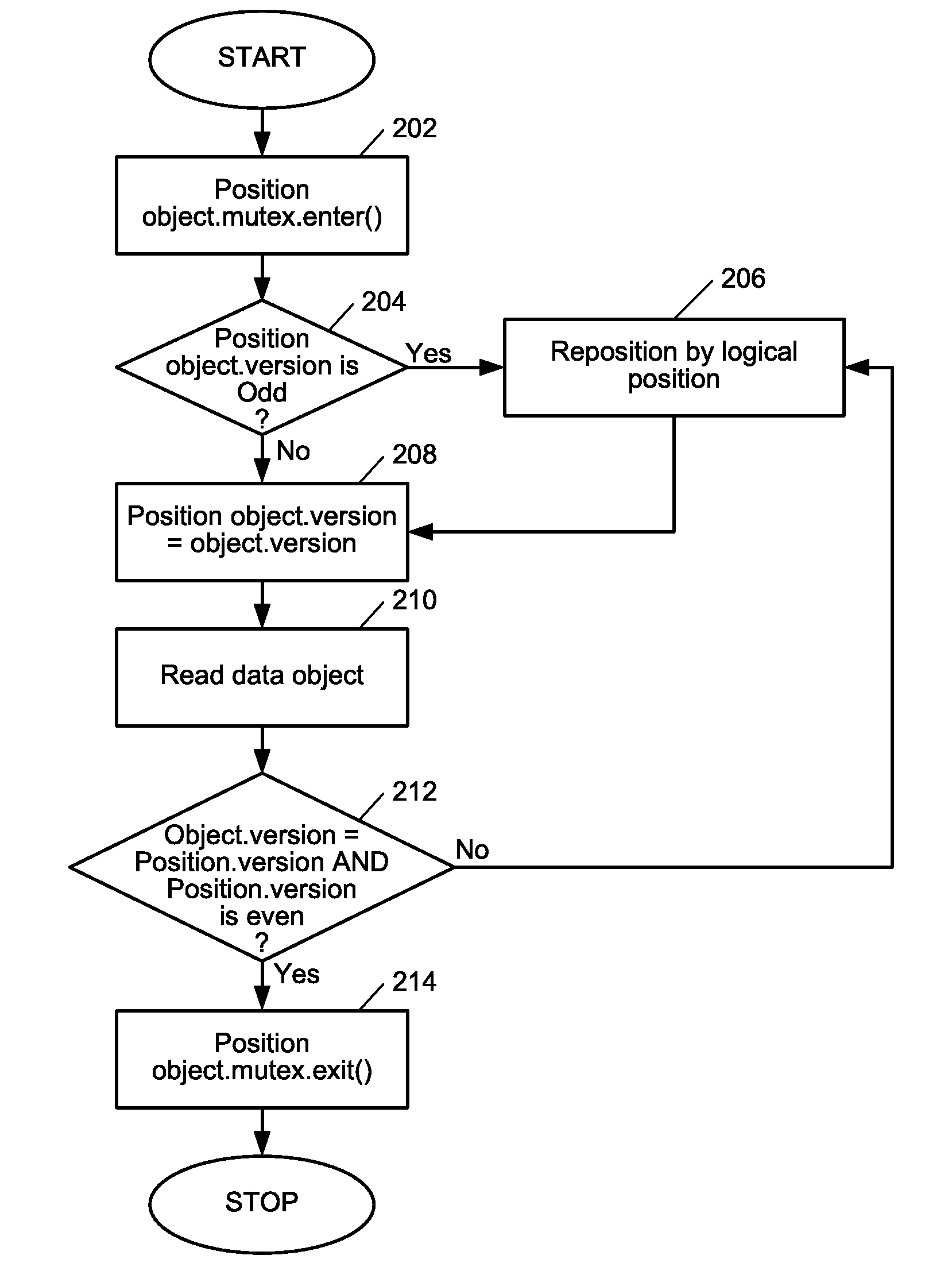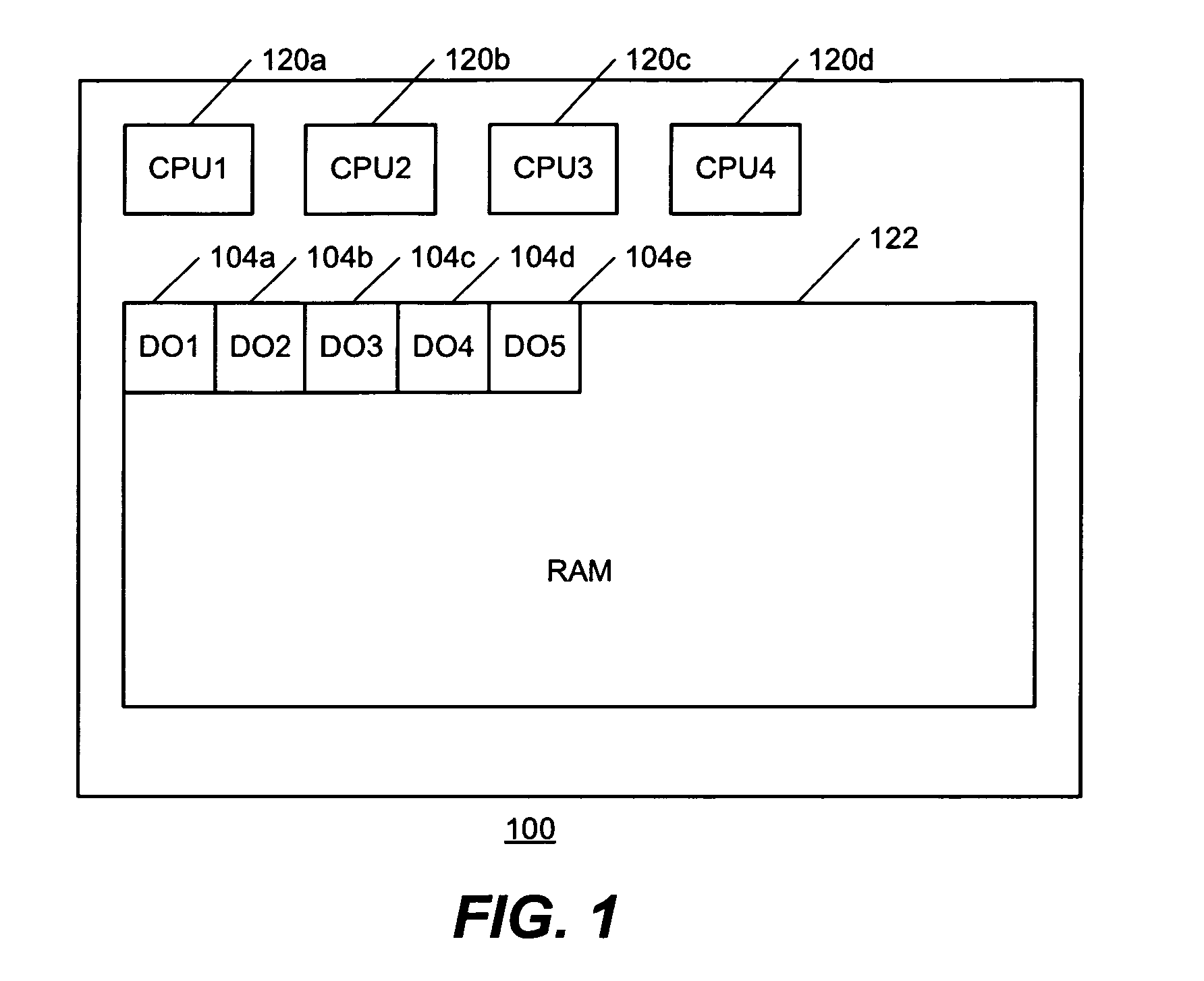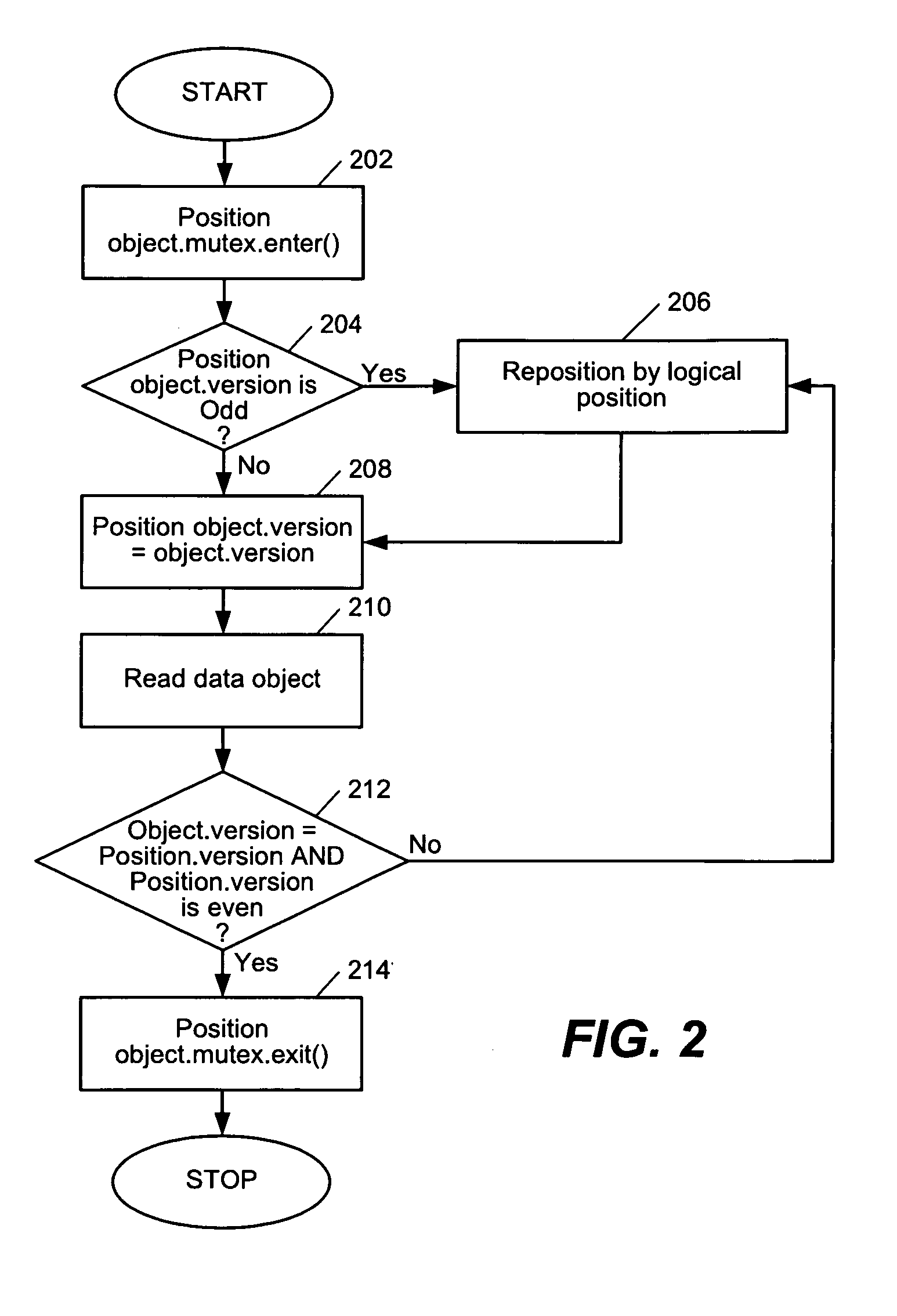Memory allocator for optimistic data access
a data access and memory allocation technology, applied in the field of accessing data, can solve problems such as segmentation fault, limit concurrent access on a single data object to one reader or writer at a time, and risky access to data objects that might be freed by a writer
- Summary
- Abstract
- Description
- Claims
- Application Information
AI Technical Summary
Problems solved by technology
Method used
Image
Examples
example 2
[0037] Further freeing of other data objects have been performed by other operations and the purging of the recycle list is triggered. As the position object list 412 is traversed, position object 414a is discovered to have the lowest read level 180 as shown in FIG. 4E. As data object 104a in the recycle list 410 has free level of 180, which is not lower than the lowest read level, it is still retained in the recycle list 410. Later on, S1 proceeds and uses position object 414a to access data object 104a again to proceed in the result set. As in example 1, the version number of position object 414a and data object 104a mismatch, and position object 414a is logically repositioned by key value. While data object 104a has been freed by S2 earlier, position object 414a's access to it is safe and a version number mismatch is discovered.
[0038]Example 3. After freeing of data object 104a, several other data objects have been freed into the recycle list and the list has become long. When a ...
PUM
 Login to View More
Login to View More Abstract
Description
Claims
Application Information
 Login to View More
Login to View More - R&D
- Intellectual Property
- Life Sciences
- Materials
- Tech Scout
- Unparalleled Data Quality
- Higher Quality Content
- 60% Fewer Hallucinations
Browse by: Latest US Patents, China's latest patents, Technical Efficacy Thesaurus, Application Domain, Technology Topic, Popular Technical Reports.
© 2025 PatSnap. All rights reserved.Legal|Privacy policy|Modern Slavery Act Transparency Statement|Sitemap|About US| Contact US: help@patsnap.com



